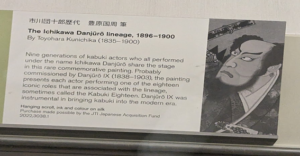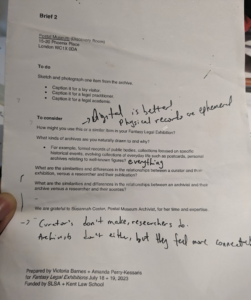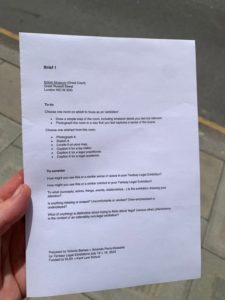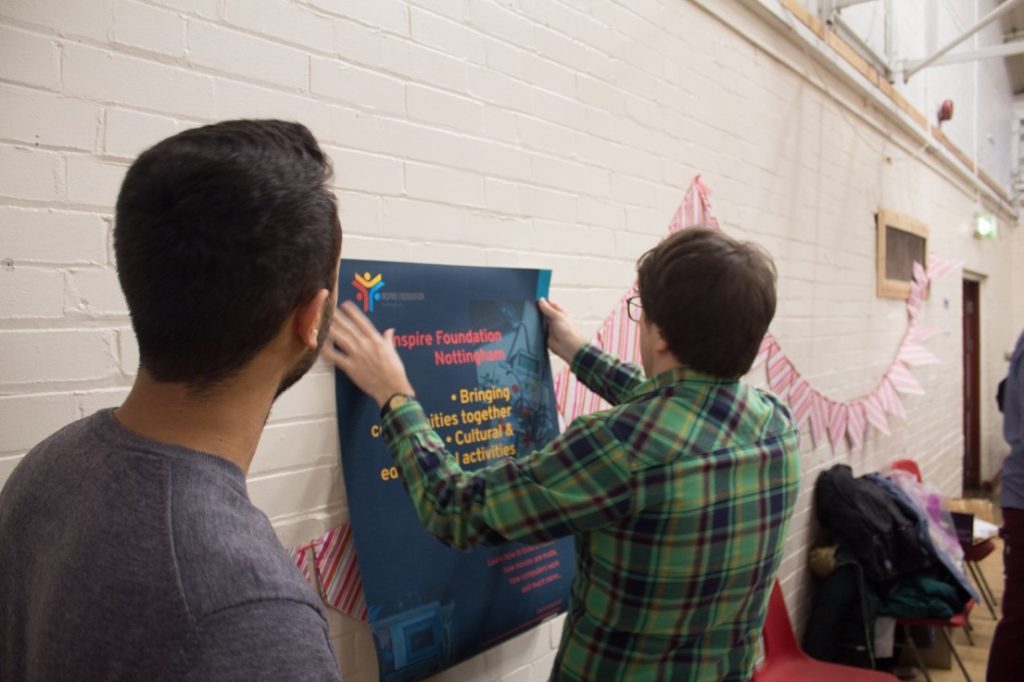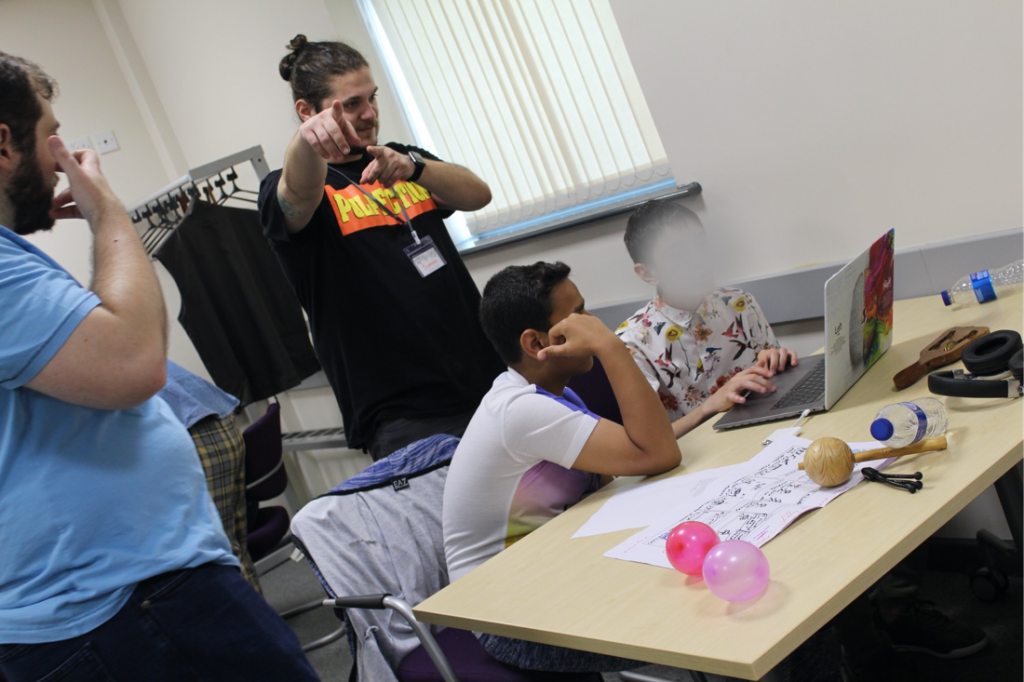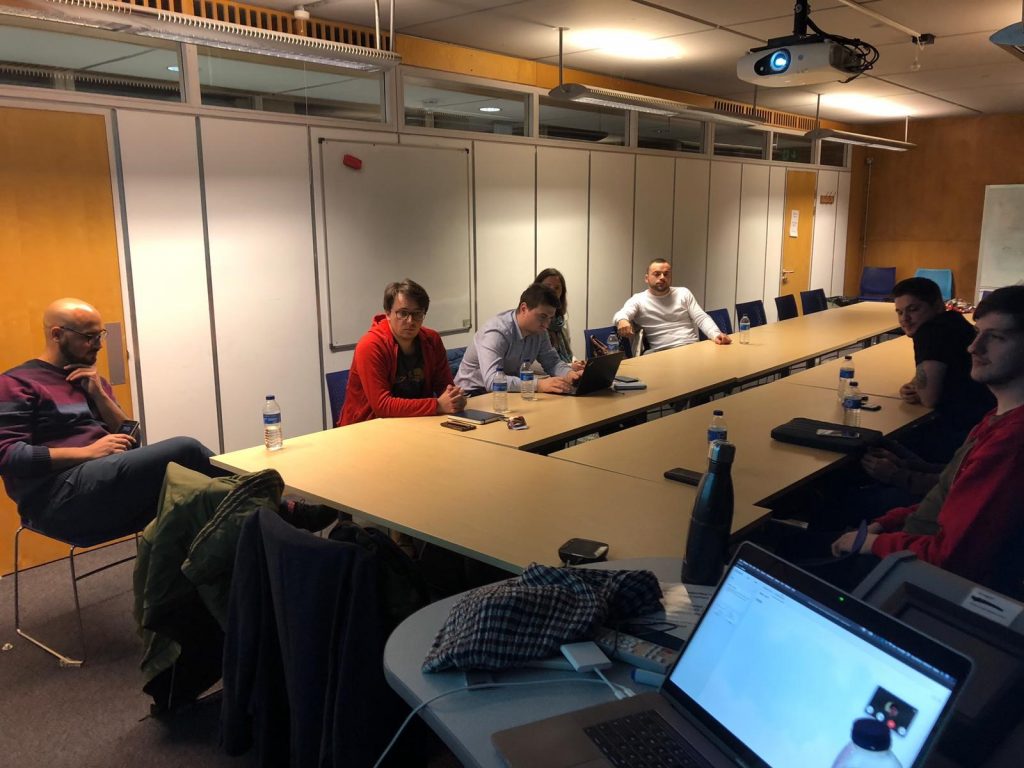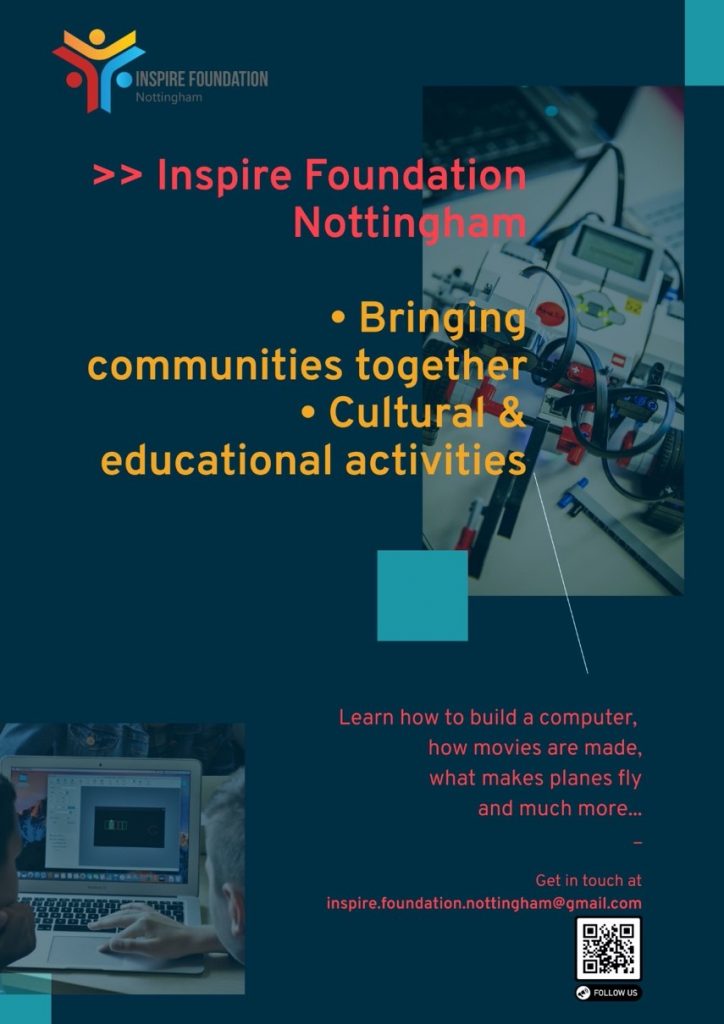post by Favour Borokini (2022 cohort)
Barely a day after I returned from St Andrews from the three weeks long Diverse Intelligences Summer Institute, I again set out to London for the Fantasy Legal Exhibitions workshop, held on the 18th and 19th of July, 2023 and organised by Victoria Barnes and Amanda Perry-Kessaris. The workshop was funded by the Socio-Legal Studies Association and Kent Law School.
I enjoyed the premise of the workshop and was quite eager to apply for many reasons. One, I enjoy speculative fiction and fantasy especially. I greatly enjoyed Max Gladstone’s portrayal of magician-lawyers in “Three Parts Dead”, partially because it validated a lot of my feelings about the amorality of lawyers and (corporate and commercial) law firms and their often very expansive (and expensive), though invisible, influence on how society and the shaping of culture – I also really like gargoyles, the ghastly grotesques. Rare is the fantasy medium that provides a treatment of the things. It’s almost like no one knows what to do with them. So bravo, Max Gladstone, bravo!
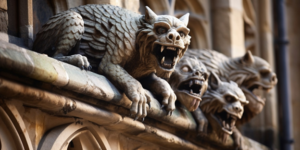
With the theme of the workshop being exhibition, I found the paradoxical invisibility of lawyers and the garish nature of legal artefacts: Lady Justicia, the ostentatiousness of lawyers and law firms, and the wig and gown all very fascinating.
Beyond fictive speculation, as part of the application, I reflected on the significance of exhibition in legal research and law and wrote about how the British Museum’s retainership of the face of Queen Idia and other artefacts during a punitive expedition in the 19th century.
The face of Queen Idia is of some significance to me, being the symbol of my alma mater, the University of Benin (UNIBEN), where I received my LLB. Though UNIBEN is a federal university (a type of public university administered by the federal government rather than a state government), it is situate within the territory of the Benin Kingdom, and bearing the face of Idia, the powerful Benin Queen mother, the University represents (as an avatar, ha!) a symbiosis of this plural sort of arrangement.
The British Library’s refusal to release Queen Idia’s mask, even on loan, for the global 1977 Festival of Arts of Culture (FESTAC ‘77), on the other hand, is emblematic of how not to support pluralism.
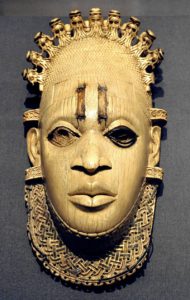
During the workshop, we visited various sites, including the British Museum, where each participant was invited to visit sections of interest, drawing and reflecting on how exhibits reflected law and power. There, I found myself drawn, perhaps inevitably, as I really love anime, to the Japan section high above, where I first happened upon the Kudara Kannon statue. I was drawn to it perhaps because it is literally an avatar, a living embodiment of the deity.
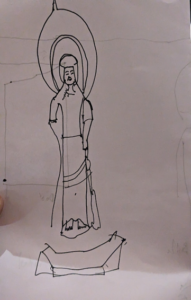
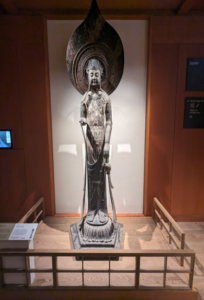
The Japan section held many attractions for me and my research, which explores performativity and self-presentation and I found the artefacts extremely fascinating as the numerous ways identity can and is presented held a lot of appeal for me.
Consider, for instance, the Kabuki of the Ichikawa Danjuro lineage performed by nine generations under the same stage name!
What did this say about fluid identity across different cultures?
After we left the British Museum, we went on to visit the Postal Museum. Here, I found the more archival, custodial nature of the Postal Museum a sharp contrast to the openness of the British Museum.
The Postal Museum was presented as an institution that sought to preserve history. Some of the procedures we undertook in the museum seemed quite ritualistic as well. We had to wash our hands and ensure they were dry, for instance, due to the fragility of the documents. No photographs were allowed within the archives, either.

We had a period of reflection on the differences in exhibition styles between these two institutions and thought about the exhibition of law. How did the presentation of law by its archivists and curates discourage and encourage public perception and interaction with the institution of law?
Following this (it was a very busy day!), we went to a nearby playground and were encouraged to draw a play item and adapt its display for our own fantasy legal exhibitions.
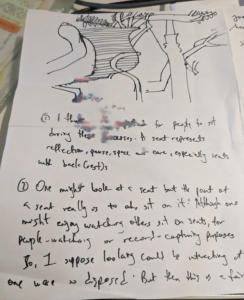
We went on to visit Middle Temple and, finally, the Institute of Advanced Legal Studies (IALS).
I think I enjoyed Middle Temple the most, though I did get lost along the way. There were so many stairs and I don’t do well with stairs and lost most of our party, and needed rescuing by Amanda.
There’s something… well, a lot about being a lawyer is quite conservative. Something to do with the nature of law itself and the sort of people typically drawn to it, sticklers for rules and all that. There is also usually a lot of history to preserve. Law provides an in, a mirror and a vantage point to understand society. You can tell a lot about the values of a group of people by studying their law. What is praised and rewarded and what is punished.
Internally, as well, how institutions like Middle Temple, dedicated to the training and development of legal professionals, were formed is rich history too, in and of itself and being a legal practitioner provides belonging. One of my favourite and amusing parts of being a (Nigerian) lawyer is how we address ourselves, “My learned brother.” In a society as conservative as Nigeria, receiving the address of “learned brother” and “gentleman” is quite significant, if also… quite clearly problematic. One may address a female colleague as brother but still treat said “brother” in very unfraternal ways, and female lawyers struggle on many fronts in the legal profession.
In Nigeria, law students wear the same clothes and study together for five years (one year more than most Nigerian undergraduate courses), we then go on to the Nigerian Law School to qualify for the Bar for a year and then spend the rest of our lives working together, dressed the same way. It was that same feeling of camaraderie that I felt at Middle Temple. A space for my kind. It was, on the whole I think, what positive exhibitionism looks like.
At the IALS, we finally got into the more practical side of things. I must preface this by admitting to struggling with visual artistry. Words, I feel quite at home with, and I do like to go on and on with the right audience but drawing and sculpting(!). Nevertheless, she persisted. Our final activities were to design our own fantasy legal exhibits and mould a sort of frontispiece for them.
I chose an eye. An eye is just a ball with long feathers on it, isn’t it?
But more seriously, all performances and exhibitions are done under an eye or for an eye or with an eye or view to achieve some aim and objective. The evil eye, the male gaze, performativeness, theatre, not even when we are alone, especially not if you’re religious, are we ever free from some sort of appraisal.
So I made an eye.

For my fantasy legal exhibition, I decided that I wanted to create an exhibit of self-portraiture avatars with African women.
All things come to an end and so too will this piece, very shortly. A few months after the workshop, all participants were invited to create a PowerPoint presentation of their exhibition. Our presentations may be viewed at the Fantasy Legal exhibitions blog post.
My research is socio-legal. In it, I explore how people represent themselves via avatars and what the law is, in response to avatars. These days, I think about the good sides of digital technologies and performance. There’s something there that is law – our norms and cultures and practices, our desires. I plan to take Eugen Ehrlich’s megalomaniac jurisprudence bent to heart as I try to discover what avatar law is.

